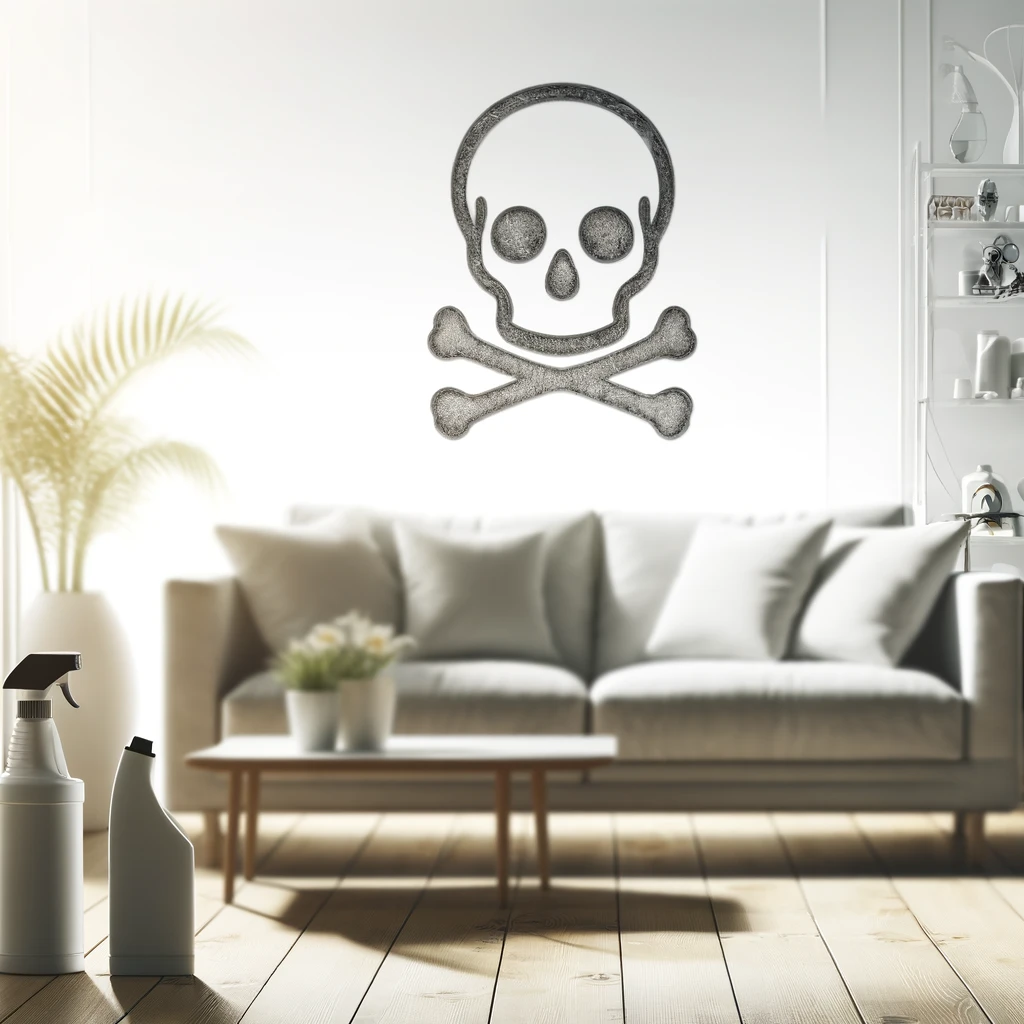Our homes are supposed to be safe havens, but many of the everyday products we use contain hidden toxins that can negatively impact our health. From household cleaners to personal care products, and even items like furniture and cookware, harmful chemicals are often lurking right under our noses. While these substances may not cause immediate harm, prolonged exposure can lead to a variety of health issues, some of which are quite serious. Let’s take a look at some of the most common sources of poisons in the home and how they affect our well-being.
1. Cleaning Products
Many household cleaners contain harsh chemicals that can be toxic when inhaled or come into contact with skin. Common culprits include bleach, ammonia, and products with strong fragrances, which often contain volatile organic compounds (VOCs). These chemicals can cause:
– Respiratory problems: Irritation of the lungs, triggering asthma attacks or exacerbating conditions like bronchitis.
– Skin irritation: Redness, itching, and burns from direct contact with these chemicals.
– Neurological effects: Long-term exposure to certain cleaning products, especially in poorly ventilated spaces, has been linked to headaches, dizziness, and even more severe nervous system damage.
2. Personal Care Products
Many personal care items like shampoos, lotions, deodorants, and cosmetics contain harmful ingredients that can be absorbed through the skin. Parabens, phthalates, and synthetic fragrances are common ingredients that have been shown to interfere with hormone function, leading to:
– Hormonal imbalances: These chemicals can mimic or disrupt hormones, potentially contributing to reproductive issues, thyroid dysfunction, and increased cancer risk.
– Skin sensitivity: Allergic reactions, including rashes, swelling, or more severe conditions like eczema or dermatitis.
– Long-term health risks: Some ingredients are linked to serious health issues such as breast cancer and developmental delays in children.
3. Air Fresheners and Scented Candles
While they make your home smell nice, air fresheners and scented candles can release harmful chemicals into the air. These products often contain phthalates and VOCs, which can affect both air quality and your health. Prolonged exposure can lead to:
– Respiratory issues: Chronic coughing, wheezing, and irritation of the throat and lungs.
– Hormonal disruption: Phthalates can interfere with the endocrine system, potentially leading to fertility problems and other hormonal issues.
– Toxic fumes: Burning scented candles can release harmful substances like formaldehyde and benzene into the air, increasing the risk of respiratory diseases and even cancer over time.
4. Non-Stick Cookware (Teflon)
Non-stick cookware, especially when heated to high temperatures, can release harmful chemicals such as perfluorooctanoic acid (PFOA) into the air. PFOA has been associated with:
– Increased cancer risk: Some studies suggest that PFOA exposure is linked to an increased risk of certain types of cancer, including kidney and testicular cancer.
– Liver damage: Long-term exposure to PFOA can damage the liver and other organs.
– Thyroid problems: PFOA has also been linked to thyroid disorders, affecting metabolism and energy levels.
5. Furniture and Carpets
Furniture and carpets, particularly new ones, can release formaldehyde and other chemicals from flame retardants, adhesives, and treatments designed to make them stain-resistant. These chemicals can have various health effects, such as:
– Respiratory issues: Formaldehyde is a known irritant and can cause difficulty breathing, especially for people with asthma or other lung conditions.
– Cancer risk: Formaldehyde is classified as a carcinogen by the World Health Organisation, meaning long-term exposure increases the risk of developing cancer.
– Skin irritation: Coming into contact with treated fabrics or carpets can lead to skin rashes or allergic reactions.
6. Pesticides
Many households use pesticides to control insects or rodents, but these chemicals can linger in the air, on surfaces, and even in food. Pesticide exposure can lead to:
– Neurological damage: Pesticides have been linked to issues such as tremors, cognitive decline, and even conditions like Parkinson’s disease.
– Hormonal disruption: Like many other chemicals, some pesticides interfere with the body’s hormonal balance, affecting reproductive health.
– Cancer risk: Long-term exposure to certain pesticides is also associated with an increased risk of various cancers, particularly leukaemia and lymphoma.
How to Minimise Exposure to Household Poisons
The good news is that there are steps you can take to reduce your exposure to these toxins:
– Choose natural alternatives: Opt for natural cleaning products made with ingredients like vinegar, baking soda, and essential oils. These are just as effective without the harsh chemicals.
– Go fragrance-free: Select unscented or naturally fragranced personal care products, and avoid air fresheners and heavily scented candles.
– Ventilate your home: Make sure your home is well-ventilated, especially when using cleaning products or lighting candles.
– Use non-toxic cookware: Consider switching to stainless steel, cast iron, or ceramic cookware to avoid the risks associated with non-stick coatings.
– Choose eco-friendly furniture: Look for furniture and carpets made with natural materials or that have been treated with low-VOC or formaldehyde-free chemicals.
– Limit pesticide use: Use natural pest control methods when possible, and always store pesticides securely away from children and pets.
Conclusion
Poisons in the home can have serious, long-term effects on our health, but by making a few conscious changes, we can greatly reduce our exposure to these harmful substances. A safer, healthier environment is within reach—one that promotes well-being for you and your loved ones.


